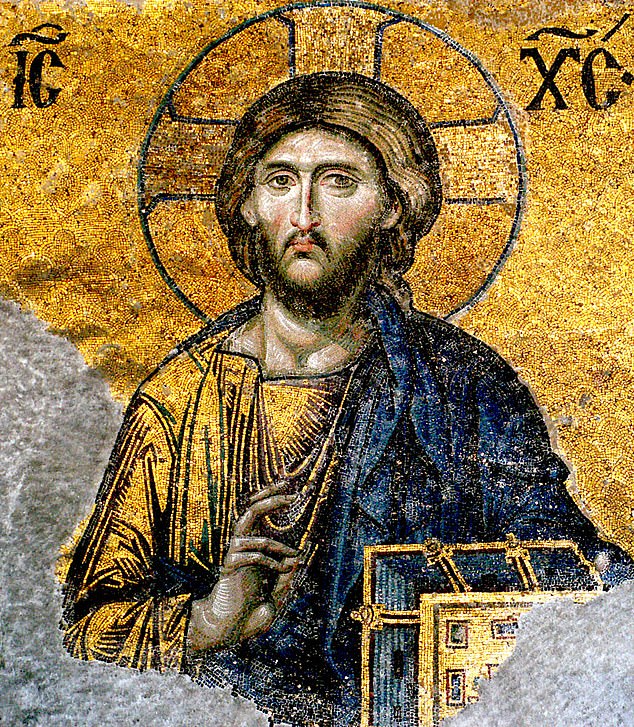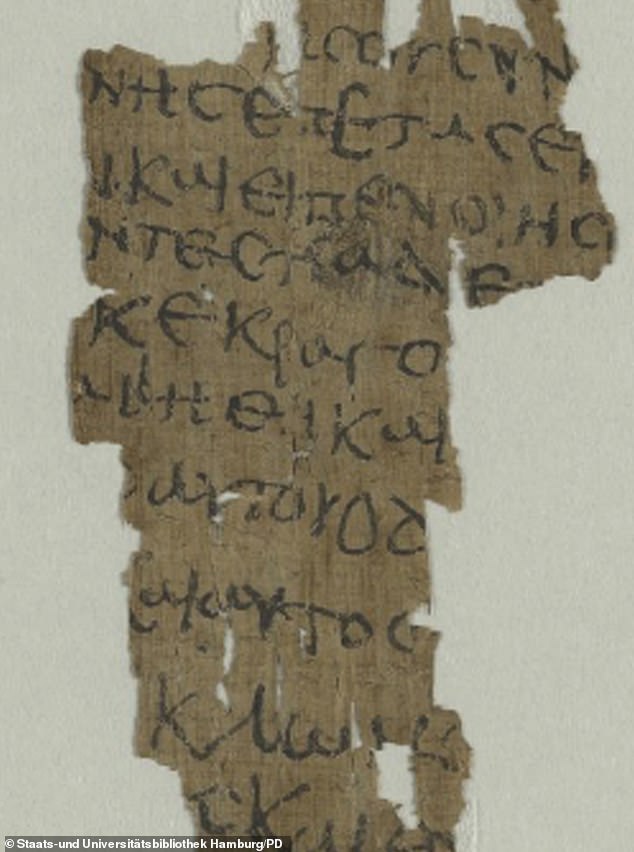An incredible story of Jesus performing a miracle as a child has been discovered scrawled in an ancient Egyptian manuscript.
The 2,000-year-old papyrus, a material that predates paper, tells the lesser-known story of the “vivification of the sparrows,” when Jesus is said to have turned clay doves into living birds, a tale also known as the “second miracle’.
The clumsiness of the writing led researchers to believe that it was probably written as part of a class exercise in a school or religious community in 4th or 5th century Egypt, which was strongly Christian at the time.
The artifact is believed to be the oldest surviving copy of the Infancy Gospel of Thomas, a book detailing the youth of Jesus of Nazareth that was excluded from the Bible.
The 2,000-year-old papyrus (pictured) describes the story of Jesus turning clay doves into live birds when he was just five years old.
Until this discovery, an 11th century codex was the oldest version of the gospel.
The original is believed to have been written around the 2nd century.
The papyrus fragment had remained unnoticed until now in the State and University Library of Hamburg, Germany.
Experts told DailyMail.com that they stumbled upon the papyri while analyzing manuscripts and noticed the name of Jesus in the text.
“It was thought to be part of an everyday document, like a private letter or a shopping list, because the handwriting looks very clumsy,” said Dr. Lajos Berkes, co-researcher and professor at the Faculty of Theology at Humboldt University. in a Press release.
‘The first thing we noticed was the word “Jesus” in the text. Then, comparing it with many other digitized papyri, we deciphered it letter by letter and quickly realized that it could not be an everyday document,” he added.
The Infancy Gospel of Thomas (IGT) describes the life of Jesus from the age of five to 12 and was written during the 2nd century as a way to fill in the blanks of his youth.
But this gospel was omitted from the Bible because it was thought to be inauthentic.
The Bible was also intended to focus solely on Jesus’ ministry, miracles, and what led to his death on the cross.
In the IGT story, Jesus is only five years old and plays in a stream while molding 12 sparrows out of soft clay in the mud of the river bed.
When his father, Joseph, realizes what he is doing, he scolds Jesus and asks why he would be molding clay on the Sabbath, a holy day of rest and worship.
In response, “(Jesus) commands the clay figures to ‘take flight like living birds,’ which they do,” Professor Dr. Gabriel Nocchi Macedo of the University of Liège, Belgium, told DailyMail.com.

There is very little information about Jesus’ childhood, but a newly discovered document tells the earliest story of his life.
The papyrus fragment measured four by two inches and contained a total of 13 lines from a popular IGT religious story.
Researchers said the story was probably written as part of a writing exercise at a school or monastery because of the clumsy handwriting, irregular lines and other meanings.
“Other than what can be deduced from the general history of the collection, there is no evidence of how or when the papyrus was discovered,” the researchers wrote in their paper.
Dr. Macedo said that although they are not sure when the papyrus became part of the library’s collection, it appeared to have been inventoried after 2001.
However, there are two possible hypotheses about how it arrived in Hamburg: “It belonged to the original core of the collection, which was acquired through the German Papyruskartell between 1906 and 1913,” he said.
‘(Then it increased through individual purchases until 1939 (or) it arrived… from Berlin in a box full of unpreserved papyri in 1990.’
Before this discovery, an 11th-century IGT manuscript was the oldest known version.
“The Infancy Gospel of Thomas is an apocryphal gospel that recounts episodes from the childhood of Jesus,” explained Dr. Macedo.
‘These episodes are not told in the Bible or in other known liturgical or theological works.
‘The work has been attributed to an author called Thomas (perhaps the apostle), but his authorship is unknown.’
The accounts of Jesus’ childhood are limited to the story of his birth, the family’s flight to Egypt, his return to Nazareth, and his visit to the Temple in Jerusalem.
More information about his youth is included in the apocryphal gospels, written after his death.
“Specialists sometimes compare IGT to fanfiction,” said Dr. Macedo. “It consists of a series of loosely connected scenes in which the young Jesus performs miracles, causing the amazement of those around him.”
It is not known why the early years of Jesus were excluded from the Bible, but Charles Dyer, general professor of Bible at Moody Bible Institute, said christianity.com It’s probably because he wanted to focus on why he came to earth, his ministry, and what led to his time on the cross.
“In fact, even as an adult we have very little of Jesus’ life, but the part we do have is what God thought was enough for us to truly understand who He is and why He came to earth,” Dyer. saying.
Dr. Macedo said he and Berkes will produce a critical edition and commentary on the manuscript and will reassess the style and language of the IGT text.
“The fragment is of extraordinary interest for the investigation,” Berkes said in the statement.
“On the one hand, because we were able to date it between the 4th and 5th centuries, which makes it the oldest known copy,” he continued.
“On the other hand, because we were able to obtain new knowledge about the transmission of the text.”

